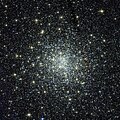
Sınaq göstərişi ölçüsü: 600 × 600 piksel. Digər ölçülər: 240 × 240 piksel | 480 × 480 piksel | 768 × 768 piksel | 1.024 × 1.024 piksel | 2.048 × 2.048 piksel | 3.777 × 3.777 piksel.
Faylın orijinalı (3.777 × 3.777 piksel, fayl həcmi: 11,63 MB, MIME növü: image/jpeg)
Faylın tarixçəsi
Faylın əvvəlki versiyasını görmək üçün gün/tarix bölməsindəki tarixlərə klikləyin.
| Tarix/Vaxt | Miniatür | Ölçülər | İstifadəçi | Şərh | |
|---|---|---|---|---|---|
| hal-hazırkı | 11:48, 22 oktyabr 2017 |  | 3.777 × 3.777 (11,63 MB) | Fabian RRRR | {{Information |Description='''Messier 28 M28 is a globular cluster located 17,900 light-years away from Earth in the constellation Sagittarius. It was discovered by Charles Messier in 1764. With an apparent magnitude of 7.7, the cluster appears as a f... |
Faylın istifadəsi
Aşağıdakı səhifə bu faylı istifadə edir:
Faylın qlobal istifadəsi
Bu fayl aşağıdakı vikilərdə istifadə olunur:
- de.wikipedia.org layihəsində istifadəsi
- en.wikipedia.org layihəsində istifadəsi
- fa.wikipedia.org layihəsində istifadəsi
- fi.wikipedia.org layihəsində istifadəsi
- fr.wikipedia.org layihəsində istifadəsi
- hu.wikipedia.org layihəsində istifadəsi
- ja.wikipedia.org layihəsində istifadəsi
- pl.wikipedia.org layihəsində istifadəsi
- sv.wikipedia.org layihəsində istifadəsi